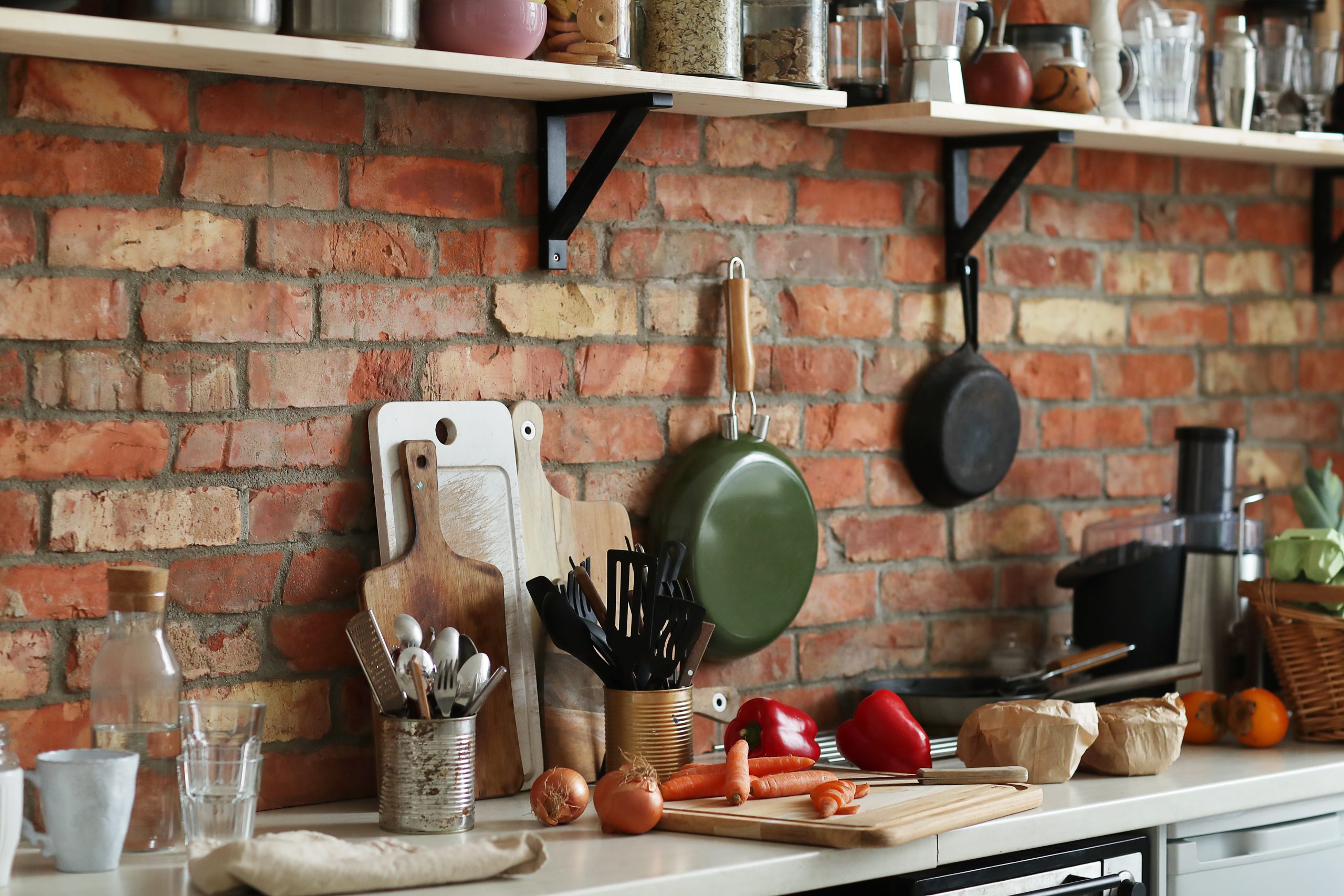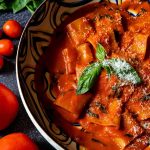In the fast-paced world of the restaurant industry, efficiency is key to success. A well-equipped kitchen is the heart of any restaurant, and having the right tools can make a world of difference in terms of productivity, food quality, and customer satisfaction. Whether you run a bustling eatery or a cozy cafe, investing in the right kitchen tools can empower your restaurant's effectiveness. In this article, we will explore 10 vital kitchen tools that every restaurant should have, along with their usage.
10 Vital Kitchen Tools
1. Chef's Knife
The chef's knife, often referred to as the workhorse of the kitchen, is an indispensable component that no culinary establishment can afford to overlook. This versatile tool serves as the linchpin for a wide spectrum of culinary tasks, making it an essential asset for any chef or cook. Its functionality spans an impressive range, encompassing activities such as chopping, slicing, dicing, and mincing, all of which are integral to the art of food preparation. A high-quality chef's knife elevates not only the quality of your culinary creations but also the overall efficiency of your kitchen. Its razor-sharp edge, combined with its ergonomic design, minimizes effort and maximizes results. This means you can tackle a wide variety of ingredients, from tender herbs to hearty root vegetables, with ease and finesse. Furthermore, the presence of a well-maintained chef's knife in your kitchen enhances safety and precision. Its balanced weight and comfortable grip reduce the likelihood of accidents, ensuring that your focus remains on the art of cooking rather than the worry of mishaps. This is particularly important in busy restaurant kitchens, where speed and safety are of paramount concern.
Usage
Use a chef's knife to finely chop herbs, dice vegetables, slice meats, and perform a myriad of other cutting tasks.
2. Cutting Board
A dependable cutting board serves as the perfect complement to a chef's knife, providing a steadfast surface for slicing and dicing that not only protects your precious knives but also preserves the integrity of your countertops. When selecting cutting boards for your restaurant's kitchen, prioritize those fashioned from robust materials like wood or plastic, as they are known for their durability and longevity. However, in the context of a bustling restaurant, where food safety is paramount, it is imperative to go beyond the basics. Maintaining a diverse collection of cutting boards becomes not just a good practice but an essential one. The presence of multiple cutting boards, each designated for specific food categories, is the cornerstone of an effective sanitation strategy.
Usage
Place ingredients on the cutting board and use your chef's knife to prepare them as needed.
3. Sauté Pans
Sauté pans, often recognized as frying pans or skillets, constitute an indispensable asset in the culinary realm, aptly suited for an extensive array of culinary creations. These kitchen essentials are available in diverse sizes and materials, ranging from stainless steel and cast iron to non-stick coatings, offering chefs a choice tailored to their specific needs and preferences. The versatility of sauté pans shines through in their adeptness at frying, searing, and coaxing out delightful flavors through the art of browning. As a result, these pans emerge as a dynamic and indispensable tool in every kitchen, capable of transforming ingredients into delectable dishes that tantalize the taste buds.
Usage
Sauté pans are great for cooking proteins like chicken or fish, sautéing vegetables, and making sauces.
4. Stock Pots
Stock pots, those capacious and deep vessels purpose-built for the craft of crafting soups, stocks, and stews, are a culinary cornerstone. Within the bustling confines of a restaurant kitchen, these culinary workhorses emerge as non-negotiable essentials. Their generous proportions are tailor-made for the task of preparing substantial quantities of delectable fare, making them an indispensable fixture in every professional kitchen. When in pursuit of the ideal stock pot for your culinary endeavors, do place emphasis on certain key attributes. Seek out stock pots furnished with robust handles that facilitate effortless maneuverability, even when laden with hearty concoctions. Additionally, consider those with snug-fitting lids, an attribute that not only simplifies handling but also ensures an ideal simmer, coaxing the finest flavors from your culinary creations.
Usage
Use stock pots to make stocks, soups, and large batches of pasta or chili.
5. Mixing Bowls
Mixing bowls, although seemingly simple, stand as an elemental and irreplaceable asset within the culinary realm. These indispensable vessels manifest in an assortment of sizes and materials, including stainless steel, glass, and plastic, catering to the diverse needs of culinary enthusiasts. Their versatility shines through in their ability to serve as instrumental aids for mixing, tossing, and even adeptly storing a plethora of ingredients. When orchestrated effectively, the availability of a curated set of mixing bowls in varying sizes acts as a catalyst, significantly streamlining the intricate tapestry of food preparation. These humble yet essential tools lay the foundation for culinary creativity, making them an essential component of any well-equipped kitchen.
Usage
Mix ingredients for salads, marinades, batters, or simply use them to hold prepped ingredients.
6. Food Processor
A food processor, heralded as a time-saving marvel in the kitchen, stands as a versatile powerhouse capable of tackling a diverse spectrum of culinary missions. Its skill set encompasses tasks ranging from precision chopping and efficient shredding to silky-smooth pureeing and even the laborious task of kneading dough. This multifaceted culinary companion serves as an invaluable asset in any restaurant kitchen, particularly when faced with the imperative of swiftly and efficiently preparing substantial quantities of food.
Usage
Use a food processor to chop vegetables, grate cheese, make sauces, or even prepare dough for pizza or bread.
7. Immersion Blender
Widely recognized as the hand blender, the immersion blender stands as a culinary chameleon, equipped to effortlessly blend and puree ingredients without necessitating their transfer to a separate vessel. It brings forth a unique attribute – the ability to operate directly within the pot or container in use, and this singular feature renders it an invaluable asset in the modern kitchen. This culinary workhorse excels in the art of crafting delectable soups, sauces, and velvety dressings. Its distinctive capability of seamlessly integrating into the cooking process offers a multifaceted boon to culinary artisans. Beyond the sheer convenience, the immersion blender is a time-saving marvel. Imagine the luxury of transforming a pot of simmering vegetables into a silky-smooth soup without ever lifting a ladle or transferring the hot liquid to a traditional blender. With a gentle plunge and deft movements, it delivers the consistent texture you desire, minimizing both time and effort. Moreover, the immersion blender extends its prowess to the art of culinary finesse. It's your trusted ally when you aspire to achieve a silky-smooth bisque that evokes comfort with each spoonful. The same tool effortlessly conquers the challenge of creating impeccably emulsified sauces, where the union of oil and vinegar requires precision. With the immersion blender, you control the journey from disparate ingredients to harmonious culinary creations. From the bustling restaurant kitchen to the home cook's haven, the immersion blender proves its mettle as a faithful companion, always at the ready to elevate your gastronomic ventures. Whether your goal is to craft sumptuous soups with velvety textures or to create sauces that sing with the perfect blend of flavors, this culinary virtuoso stands as a testament to efficiency, precision, and culinary excellence. In the world of culinary tools, the immersion blender is the silent maestro that transforms ordinary ingredients into extraordinary dishes.
Usage
Immersion blenders are perfect for pureeing soups, creating silky-smooth sauces, and making quick smoothies or shakes.
8. Digital Kitchen Scale
Precision in the culinary arts is paramount, and this imperative becomes even more pronounced within the demanding precincts of a restaurant kitchen. In this unforgiving arena, a digital kitchen scale emerges as the linchpin of exactitude, guaranteeing the meticulous measurement of ingredients. This commitment to precision, facilitated by the scale, reverberates through every aspect of the culinary process, bestowing upon it the priceless gifts of unwavering food quality and meticulous portion control. Whether the culinary voyage leads to the delicate realms of baking or the creation of savory entrees, the digital kitchen scale stakes its claim as an indispensable and non-negotiable tool. In the realm of pastries, it becomes the arbiter of perfectly risen dough and impeccably balanced flavors. In the savory domain, it champions consistency, ensuring that every dish that leaves the kitchen is a testament to the unerring precision bestowed by this invaluable culinary companion.
Usage
Use a digital kitchen scale to measure ingredients like flour, sugar, or meat to ensure accurate proportions in your recipes.
9. Thermometers
Food safety stands as an unassailable pinnacle in the hierarchy of restaurant priorities, and within this realm, thermometers assume a pivotal role of guardianship. These instruments serve as the sentinels of culinary assurance, ensuring that each dish is meticulously cooked to its prescribed temperature, thereby safeguarding the well-being of patrons. The world of thermometers is a diverse one, replete with specialized tools designed to cater to unique culinary circumstances. Among these, the instant-read thermometer provides swift and accurate temperature assessments, offering culinary artisans immediate insights. In contrast, the probe thermometer delves deeper, penetrating the core of meats and other culinary creations to deliver precision. Lastly, the infrared thermometer stands as a beacon of contactless precision, ideal for assessing temperatures at a distance. In the ever-vigilant quest for food safety and culinary excellence, these thermometers act as essential guardians, ensuring that each dish emerges from the kitchen not only with impeccable flavors but also as a testament to meticulous temperature control.
Usage
Use thermometers to check the internal temperature of meats, ensuring they are cooked to the recommended safe levels. Also, monitor the temperature of refrigerators and freezers to maintain food safety.
10. Mandoline Slicer
The mandoline slicer emerges as a precision instrument, finely honed for the art of achieving uniform thickness when slicing an array of fruits and vegetables. Its mastery lies in its ability to deliver consistency, ensuring each slice is a mirror image of the last. In the culinary arena, this tool becomes the virtuoso for crafting harmonious compositions such as salads, gratins, and decorative garnishes. At its core, the mandoline slicer is a manifestation of versatility, thanks to its adjustable blades. With this feature at your disposal, you possess the power to tailor the thickness and style of your slices to match the unique demands of each culinary creation. Whether you seek wafer-thin cucumber slices for a refreshing salad or precisely cut potatoes for a gratin that sings with visual appeal, the mandoline slicer stands as a maestro ready to perform your culinary symphony.
Usage
Use a mandoline slicer to create thin, uniform slices of ingredients like cucumbers, potatoes, and carrots for various culinary applications.
Conclusion
In the restaurant industry, having the right kitchen tools can significantly impact your kitchen's efficiency and the quality of your dishes. The 10 vital kitchen tools discussed in this article – chef's knife, cutting board, sauté pans, stock pots, mixing bowls, food processor, immersion blender, digital kitchen scale, thermometers, and mandoline slicer – are essential for empowering your restaurant's effectiveness. Investing in high-quality versions of these tools, training your kitchen staff to use them effectively, and ensuring proper maintenance will not only improve your restaurant's efficiency but also contribute to the consistency and quality of the food you serve. By equipping your kitchen with these essential tools, you can create a well-oiled culinary machine that delights your customers and sets your restaurant up for success in a highly competitive industry.
Stock up on these essential kitchen tools, and watch your restaurant’s efficiency rise to a delicious new level!
YOU MAY LIKE THIS
- The Best Affordable Restaurants in Abuja You Should Try

- The Best Chinese Restaurants in Abuja for Lunch

- The Best Korean Restaurants in Lagos for Authentic Flavors

- The Best Lebanese Restaurants in Lagos to Explore

- The Best New Restaurants To Dine at Before Christmas

- The Best Italian Restaurants in South Africa










